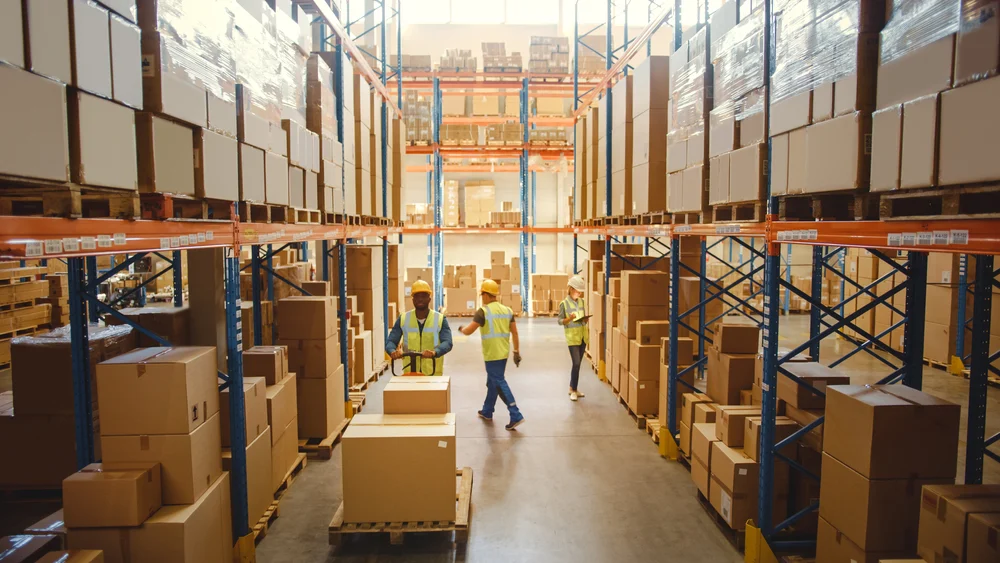
The Rise of Omnichannel Logistics: Meeting Customer Expectations Sustainably
In 2025, the logistics landscape is evolving faster than ever, and one clear trend is emerging as a game changer: omnichannel fulfillment. As consumer expectations rise for faster, more flexible delivery options, third-party logistics (3PL) providers are adapting by offering integrated solutions that span across sales channels while maintaining a strong focus on sustainability.
What Is Omnichannel Fulfillment and Why It Matters
Omnichannel fulfillment refers to the ability to process and deliver orders from multiple sales channels—online stores, marketplaces, social media, and physical retail—using a unified logistics approach. For brands, this strategy ensures consistent customer experiences regardless of where the order originates. For 3PLs, it requires advanced coordination, real-time inventory visibility, and smart automation across an omnichannel warehouse network.
Today’s consumers expect same-day or next-day shipping, in-store pickup, and even easy returns via multiple touchpoints. Without an efficient fulfillment strategy in place, companies risk losing customer loyalty and falling behind competitors.
The Role of 3PLs in Omnichannel Order Fulfillment
Modern 3PL providers play a pivotal role in omnichannel order fulfillment, acting as the operational backbone for brands navigating complex supply chains. This includes everything from managing inventory across channels and handling last-mile delivery to offering branded packaging and automated returns. Advanced warehouse management systems (WMS) allow providers to sync inventory data in real time, ensuring faster, more accurate fulfillment no matter where the order comes from.
At Tetris3PL, we’ve embraced this shift by optimizing our warehouse operations to meet both speed and sustainability goals. Orders from TikTok, Amazon, Shopify, or in-store POS systems are processed seamlessly through the same system, ensuring efficiency and accuracy at every step.
Balancing Speed and Sustainability
While speed is critical in omnichannel logistics, sustainability is no longer optional—it’s a customer expectation. At Tetris3PL, our omnichannel fulfillment services are designed to minimize environmental impact without compromising performance.
We use recycled carton packaging, LED warehouse lighting, and water conservation practices. Our facilities operate with electric forklifts and enforce waste sorting policies to reduce landfill contributions. We’ve also transitioned to paperless operations, including electronic reporting and digital shipping documentation.
By integrating sustainable practices directly into our omnichannel fulfillment workflow, we help brands align their customer service promises with their environmental commitments.
Looking Ahead: Tech, Transparency, and Trust
Technology will continue to drive omnichannel logistics forward. From AI-powered demand forecasting to smart routing for deliveries, the future of omnichannel fulfillment services lies in automation, transparency, and adaptability. Customers want to know not only when their package will arrive, but also how it was shipped—and how their purchase impacts the planet.
As a forward-thinking 3PL, we’re investing in tools that provide end-to-end visibility across all fulfillment stages. Whether it’s tracking real-time stock levels across multiple sales platforms or optimizing packaging for carbon efficiency, Tetris3PL is committed to innovation that benefits both our clients and the environment.
Conclusion
The demand for agile, customer-centric logistics will only grow, and omnichannel order fulfillment stands at the core of this transformation. By combining speed, flexibility, and eco-conscious operations, 3PLs like Tetris3PL are helping businesses thrive in a competitive, sustainable future.
If you’re looking for a partner to streamline your fulfillment services while staying green, we’re here to help. Because in 2025, smart logistics isn’t just about getting orders out—it’s about doing it right.
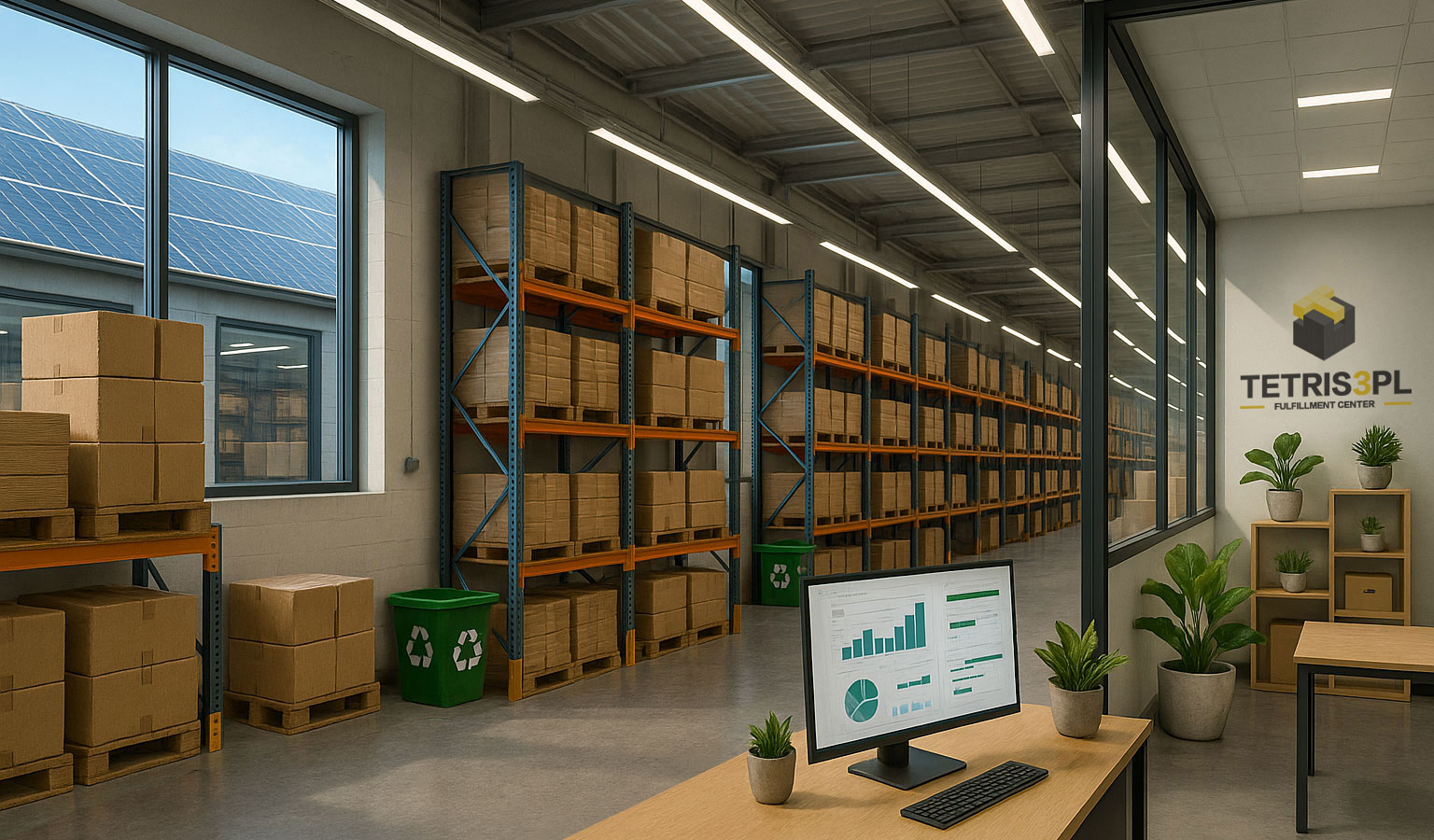
Green Order Fulfillment: How 3PL Providers Are Driving Sustainability in 2025
Sustainability is no longer just an option — it’s a responsibility. Across industries, companies are seeking partners who align with their values, especially when it comes to environmental stewardship. In 2025, the third-party logistics (3PL) sector is playing a critical role in this shift. Green logistics is not only transforming how goods move through the supply chain, but also reshaping how 3rd party fulfillment company operates behind the scenes.
At Tetris3PL, we recognize that the choices we make today directly impact the world we’ll live in tomorrow. That’s why we have embedded sustainability into our core operations, taking real, measurable steps toward a greener future — and we’re just getting started.
Our Current Eco-Friendly Practices
We are proud to already have several green initiatives in place across our facilities:
Garbage Sorting
Waste management is one of the simplest yet most powerful ways to support sustainability. We maintain strict garbage sorting policies to ensure that recyclables like cardboard, plastics, and metals are separated correctly and sent to the right recycling facilities.
Recycled Packaging
Main part of our shipping packaging is made from recycled carton materials. By using recycled materials instead of sourcing new ones, we are actively reducing deforestation, conserving water, and lowering the carbon footprint associated with packaging production.
Energy-Efficient LED Lighting
Lighting plays a major role in a warehouse’s energy consumption. We’ve transitioned to 100% energy-efficient LED lighting throughout our facilities. These lights not only use significantly less energy but also last longer, reducing waste and maintenance requirements.
Water Conservation Initiatives
Water is one of our most precious resources. That’s why we’ve installed low-flow fixtures and implemented careful water usage practices in our restrooms, break rooms, and maintenance operations. Every drop we save today makes a difference tomorrow.
Eco-Friendly Office Supplies
Sustainability extends beyond the warehouse floor. Our offices use recycled paper, refillable pens, eco-friendly cleaning supplies, and other sustainable materials, making sure our administrative work is as green as our fulfillment operations.
Paperless Reporting
By switching entirely to digital reporting and documentation, we have eliminated thousands of unnecessary printouts every year. This not only saves trees but also increases efficiency, providing quicker access to important data and enhancing overall communication.
Our Vision for the Future
While we are proud of the steps we’ve taken so far, we know there is always more to do. That’s why we are actively planning additional eco-friendly initiatives to further reduce our environmental impact, including:
- Solar Panel Installation: We are exploring the installation of solar panels on our warehouse roofs to generate clean, renewable energy onsite.
- Carbon Offset Partnerships: We are looking into partnerships that would allow us to offset the remaining carbon footprint from our operations through certified environmental projects.
- Employee Green Initiatives: From encouraging carpooling and biking to work, to providing sustainability training, we believe every small action our team takes can lead to big change.
Why Green Fulfillment Matters
Sustainability isn’t just good for the planet — it’s good for business. Customers today expect their partners to act responsibly. Choosing a green 3PL fulfillment provider means businesses can lower their supply chain emissions, align with corporate social responsibility goals, and appeal to eco-conscious consumers.
By investing in sustainable logistics solutions today, companies can future-proof their operations against evolving regulations, improve operational efficiency, and build stronger brand loyalty.
At Tetris3PL, we are proud to be part of this global movement. Our clients trust us not just to fulfill their orders efficiently, but to do so with a deep respect for the world we all share.
Join Us on the Journey
We believe that a smarter, greener 3rd party fulfillment centers benefits everyone — our partners, our communities, and our planet. As we expand our eco-friendly initiatives in 2025 and beyond, we invite you to join us in creating a cleaner, brighter future.
Together, we can move fulfillment forward — sustainably.
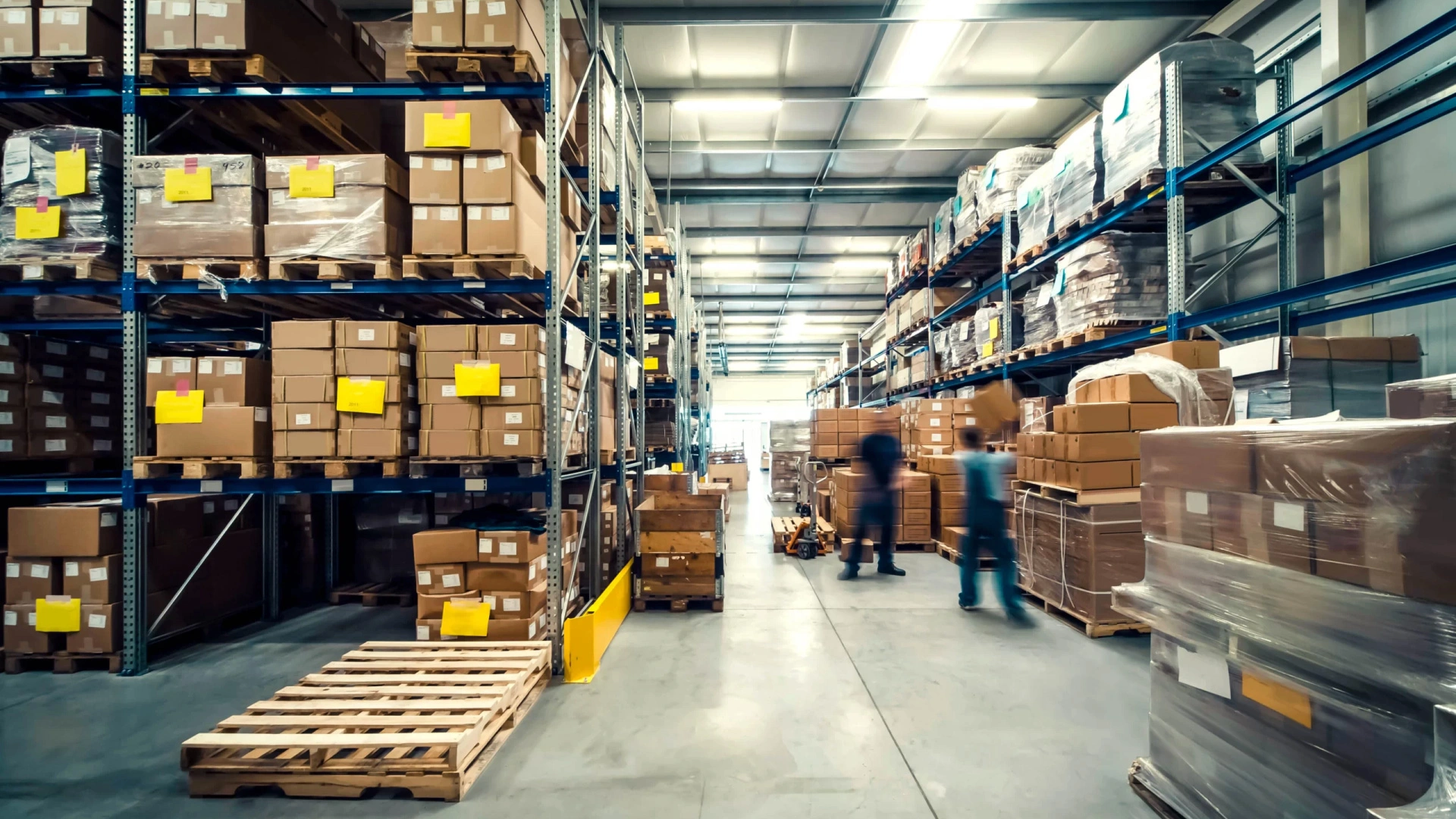
Adapting to E-Commerce Growth: Challenges and Opportunities for 3PL Fulfillment Providers
The rapid rise of e-commerce has transformed the logistics industry, presenting both opportunities and challenges for third-party logistics (3PL) providers. As more consumers turn to online shopping for convenience, speed, and variety, the demand for efficient and scalable 3PL fulfillment services has surged. In this article, we explore how companies like Tetris3PL can navigate these changes, optimize operations, and stay ahead in a competitive market.
The Impact of E-Commerce on 3PL
E-commerce has grown exponentially, with global online sales exceeding $6.3 trillion in 2024. This shift has increased the demand for warehousing, order fulfillment, and last-mile delivery, putting pressure on 3PL fulfillment centers to enhance their capabilities. Unlike traditional retail, where large quantities of goods are sent to a limited number of stores, e-commerce fulfillment involves processing and shipping thousands of individual orders daily to various locations.
For fulfillment providers, this means investing in technology, expanding warehouse capacity, and optimizing transportation networks to meet the needs of modern e-commerce businesses. The companies that can adapt quickly to these changes will gain a significant competitive advantage.
Key Challenges Facing 3PL Fulfillment Companies in the E-Commerce Era
1. Scalability and Flexibility
E-commerce demand fluctuates significantly, with peak seasons like Black Friday and holiday shopping periods bringing massive order surges. To manage these variations, 3PL fulfillment centers must have:
- Flexible staffing solutions to accommodate seasonal demand.
- Advanced warehouse management systems (WMS) that optimize inventory tracking.
- Scalable strategies that allow for rapid expansion or contraction as needed.
2. Last-Mile Delivery Optimization
The final leg of delivery is often the most challenging and expensive part of the supply chain. Customers expect fast and affordable shipping, and companies that fail to meet these expectations risk losing business. To enhance last-mile efficiency, 3PL fulfillment services are:
- Partnering with local courier networks to improve delivery speed.
- Utilizing route optimization software to reduce costs and transit times.
- Exploring micro-fulfillment centers in urban areas to enable same-day or next-day deliveries.
3. Returns Management
The rise of e-commerce has also led to an increase in return rates, particularly in industries like apparel and electronics. Handling returns efficiently is essential for maintaining customer satisfaction and reducing operational costs. A well-structured returns management system should include:
- Automated return processing to streamline refund or replacement orders.
- Clear return policies to minimize disputes.
- Strategies for restocking, refurbishing, or reselling returned goods.
4. Technology Integration
A seamless connection between e-commerce platforms and 3PL fulfillment providers is crucial for efficient order fulfillment. Businesses using Shopify, Amazon, or WooCommerce expect real-time inventory updates, automated order processing, and transparent tracking. To meet these demands, 3PL companies should:
- Invest in API-driven integrations that sync with multiple sales channels.
- Utilize AI and machine learning for demand forecasting and warehouse optimization.
- Implement robotic automation in fulfillment centers to speed up processing times.
5. Rising Operational Costs
Labor shortages, increasing fuel prices, and warehouse rental rates are all contributing to higher costs for logistics providers. To mitigate these challenges, 3PL fulfillment companies must focus on:
- Energy-efficient warehouse operations to reduce electricity costs.
- Automation and robotics to lower dependency on manual labor.
- Consolidation strategies to optimize transportation and reduce empty miles.
Opportunities for Growth in the E-Commerce Space
While these challenges are significant, they also present opportunities for fulfillment centers that are willing to innovate and evolve.
1. Value-Added Services
Many e-commerce brands are looking for more than just basic fulfillment—they want partners who can offer additional services, such as:
- Kitting and bundling for subscription boxes.
- Custom packaging to enhance brand identity.
- Quality control inspections to maintain product standards.
By providing these services, 3PLs can differentiate themselves and attract more clients.
2. Sustainable Logistics Solutions
Sustainability is becoming a priority for consumers and businesses alike. To stay competitive, 3PL fulfillment services should implement:
- Eco-friendly packaging options, such as biodegradable materials.
- Green shipping initiatives, like carbon-neutral delivery programs.
- Energy-efficient warehouse designs that utilize renewable energy sources.
3. Cross-Border E-Commerce Fulfillment
With more businesses expanding internationally, 3PL fulfillment companies have an opportunity to offer cross-border fulfillment solutions, including:
- Managing customs clearance and import/export regulations.
- Establishing strategic warehouse locations for faster international shipping.
- Providing localized return options to reduce costs for global customers.
4. Leveraging Data Analytics for Optimization
Data-driven decision-making can help 3PL fulfillment providers improve efficiency and profitability. By leveraging analytics, companies can:
- Optimize inventory levels to prevent stockouts or overstocking.
- Predict peak demand periods and prepare accordingly.
- Improve routing strategies to reduce delivery times and costs.
How Tetris3PL is Adapting to E-Commerce Growth
At Tetris3PL, we understand the fast-paced nature of e-commerce and have tailored our 3PL fulfillment services to meet the demands of online retailers. Our capabilities include:
- DTC Fulfillment: Fast, accurate order processing and shipping for direct-to-consumer brands.
- Amazon Prep Services: Ensuring products meet Amazon’s strict fulfillment requirements.
- B2B and Wholesale Fulfillment: Supporting larger bulk shipments for businesses.
- Cross-Docking and Freight Forwarding: Reducing storage time and accelerating distribution.
- Returns Management: Streamlining the process to ensure efficiency and customer satisfaction.
Our fulfillment center, strategically located in Las Vegas, Nevada, offers proximity to major shipping hubs, enabling faster and more cost-effective deliveries. With our advanced WMS, seamless e-commerce integrations, and commitment to innovation, we empower businesses to scale and succeed in the evolving e-commerce landscape.
Conclusion
The e-commerce boom presents both significant challenges and tremendous opportunities for 3PL fulfillment companies. By embracing technology, optimizing logistics operations, and offering value-added services, companies like Tetris3PL are well-positioned to thrive in this dynamic environment. As online shopping continues to evolve, the logistics industry must remain agile, innovative, and customer-focused to meet the ever-changing needs of e-commerce brands and consumers alike.
Looking for a reliable 3PL fulfillment partner to support your growing e-commerce business? Contact Tetris3PL today and let us help you navigate the future of logistics with efficiency and expertise.
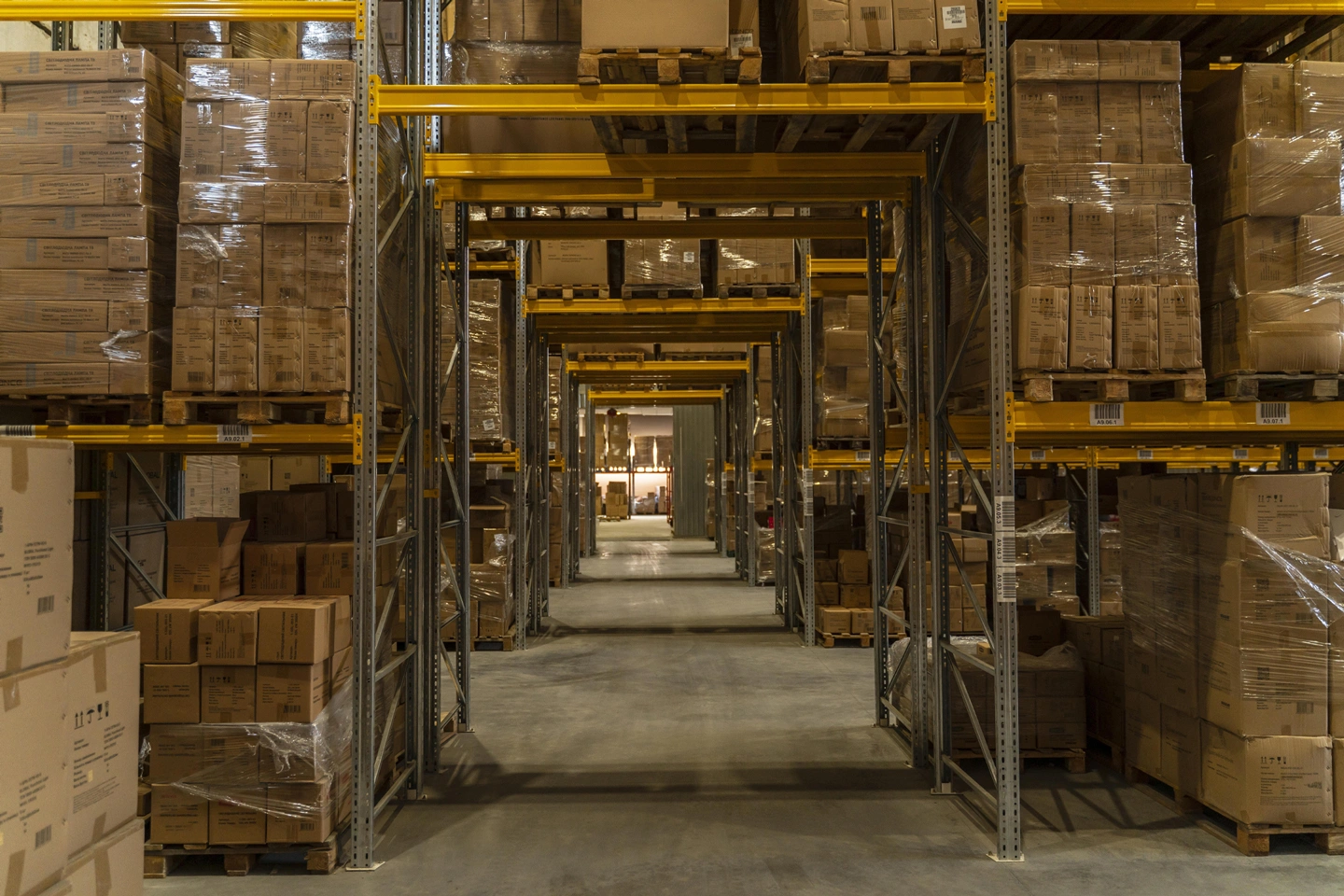
The Hidden Costs of Not Using a Warehouse in Las Vegas
In today’s fast-paced business environment, efficient logistics and inventory management are essential for companies aiming to scale their operations. Las Vegas, a hub for commerce and a strategic location for warehousing, allows businesses to streamline their supply chains and enhance efficiency. However, many companies manage storage and distribution independently, unaware of the hidden costs they incur by not utilizing a professional warehouse service.
Failing to use a dedicated warehouse in Las Vegas can lead to significant drawbacks, including wasted time and inefficiencies, increased operational costs, and poor customer satisfaction. This article thoroughly explores these hidden costs and explains why Tetris3PL is the ideal partner for businesses seeking cost-effective and reliable warehouse storage solutions.
Wasted Time and Inefficiencies
One of the most overlooked aspects of running a business without a warehouse is the amount of time wasted on inefficient inventory management. Here’s how not using a warehouse service can affect your business:
1. Time-Consuming Inventory Handling
Businesses that do not use a dedicated warehouse often rely on in-house storage or fragmented third-party solutions. Without a structured warehouse system, tracking and managing inventory can become chaotic, leading to the following:
- Frequent stock misplacement
- Increased time spent locating products
- Higher risks of overstocking or understocking
A professional warehouse service like Tetris3PL provides advanced inventory management systems, enabling real-time tracking and seamless organization of goods.
2. Inefficient Order Fulfillment
Customers expect fast and accurate order fulfillment, but managing fulfillment independently can cause delays and mistakes. When businesses handle shipping internally, they face challenges such as:
- Delayed picking and packing
- Errors in shipments
- Disorganized fulfillment workflows
Warehousing solutions optimize order fulfillment by streamlining the entire process, ensuring delivery accuracy and efficiency.
3. Logistical Complexities and Errors
Without a warehouse, businesses must coordinate shipments from various locations, leading to logistical bottlenecks. Unstructured logistics can result in:
- Higher chances of shipment mix-ups
- Poor coordination between suppliers and customers
- Ineffective distribution networks
By utilizing Tetris3PL’s warehouse services, businesses can integrate efficient logistics solutions, reduce errors, and enhance overall productivity.
Increased Operational Costs
Many businesses assume that not using a warehouse saves money, but in reality, it can lead to higher operational costs due to inefficiencies and mismanagement. Here’s how:
1. Higher Storage Expenses
Storing inventory in offices, garages, or rental spaces may seem like a cost-saving measure, but these options often result in:
- Higher per-square-foot costs compared to professional warehouse solutions
- Inefficient use of space, leading to excessive clutter
- Safety and compliance issues due to improper storage conditions
By leveraging Tetris3PL’s warehouse storage solutions, businesses gain access to cost-efficient, scalable storage facilities without hidden expenses.
2. Labor Costs and Productivity Loss
Handling inventory internally means assigning employees to storage, tracking, and shipping, removing their focus from core business functions. This results in:
- Increased labor expenses
- Productivity loss due to inefficient workflows
- Higher chances of human error
A warehouse service provider like Tetris3PL employs trained professionals and advanced warehouse management technologies to reduce labor costs and boost productivity.
3. Rising Transportation Costs
Businesses that do not use warehouses may face higher transportation expenses due to inefficient delivery routes and last-minute shipping arrangements. Costs can quickly escalate due to:
- Last-mile delivery inefficiencies
- Frequent small shipments rather than consolidated bulk deliveries
- Emergency shipping expenses
By strategically positioning inventory in Tetris3PL’s Las Vegas warehouse, businesses can optimize transportation costs and ensure faster, more economical deliveries.
Impact on Customer Satisfaction and Delivery Speed
Customer satisfaction is a critical component of business success. Delayed, incorrect, or damaged shipments lead to negative reviews, lost customers, and decreased brand loyalty. Here’s how a lack of warehousing negatively impacts customer experience:
1. Delayed Deliveries and Poor Fulfillment Performance
A significant consequence of not using a warehouse is inconsistent delivery timelines. Businesses that handle fulfillment independently often experience the following:
- Longer lead times due to inefficient order processing
- Delays caused by last-minute logistics coordination
- Poor handling of returns and exchanges
Tetris3PL’s warehousing solutions guarantee faster order fulfillment, ensuring that customers receive their orders on time, every time.
2. Damaged or Incorrect Shipments
Without a proper warehouse infrastructure, businesses may store products in unsuitable conditions, increasing the risk of:
- Product damage due to improper storage environments
- Errors in shipments due to lack of inventory tracking
- Increased returns and dissatisfied customers
Tetris3PL’s climate-controlled, well-organized warehousing solutions ensure product safety and shipment accuracy, reducing costly returns and improving customer trust.
3. Loss of Competitive Edge
Fast and reliable fulfillment is a key competitive advantage in today’s market. Businesses without warehouse solutions struggle to keep up with competitors that leverage professional warehousing for:
- Fast delivery
- Optimized supply chain management
- Lower operational expenses
Tetris3PL’s state-of-the-art warehouse and fulfillment solutions give businesses a competitive advantage by allowing them to scale and effectively meet customer demands.
The Tetris3PL Advantage: Why Choose Us?
If you’re looking for a reliable warehouse in Las Vegas, Tetris3PL is your best choice. Here’s what sets us apart:
- Secure and Scalable Storage Solutions: Flexible space options tailored to your business needs.
- Advanced Inventory Management: Real-time tracking and automated inventory systems.
- Seamless Order Fulfillment: Fast, accurate, and cost-effective fulfillment services.
- Optimized Logistics & Distribution: Reduced shipping costs with strategic warehouse positioning.
Conclusion
The hidden costs of not using a warehouse in Las Vegas extend beyond financial expenses — they affect time efficiency, customer satisfaction, and business scalability. By investing in professional warehousing solutions, businesses can significantly reduce inefficiencies, lower operational costs, and enhance customer service.
Tetris3PL offers best-in-class warehouse storage and logistics solutions, helping businesses streamline their operations and stay ahead of the competition. Don’t let poor storage and logistics management hinder your business growth—partner with Tetris3PL today!
For more information, visit Tetris3PL Warehouse Storage Solutions and discover how we can help your business thrive!
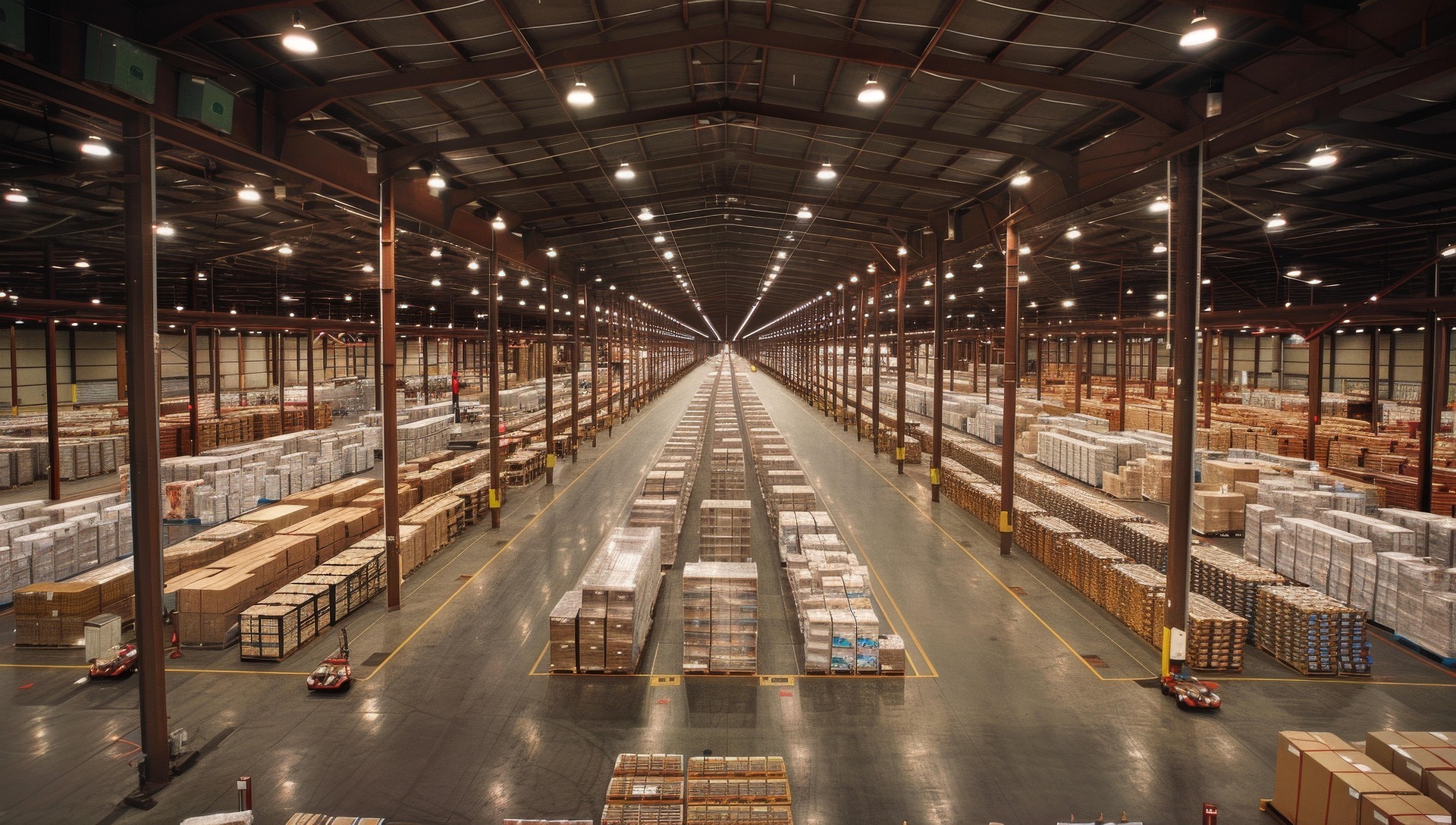
Logistics Warehouse: What It Is and How It Works
What is a Logistics Warehouse?
A logistics warehouse is a dedicated facility where goods, raw materials, and finished products are stored, organized, and managed before being distributed to their final destinations. It is a crucial component of the supply chain, enabling businesses to efficiently manage inventory, meet customer demand, and ensure seamless delivery.
Logistics warehouses play a pivotal role in connecting manufacturers, suppliers, and customers in today’s global economy. They act as a buffer between production and consumption, allowing businesses to handle fluctuations in demand, manage inventory levels, and streamline distribution processes. Supply chain disruptions would become commonplace without well-functioning warehouses, impacting customer satisfaction and business profitability.
Key Functions of a Logistics Warehouse:
- Storage and Inventory Management
A primary function of logistics warehouses is to provide secure storage for goods. Products are organized systematically to maximize space utilization and ensure easy retrieval. Inventory management systems often track stock levels, monitor shelf life, and prevent overstocking or stockouts.
At Rocket Moving, we once handled a relocation where the client’s inventory list didn’t match what was actually in their warehouse. That mismatch forced us to pause the job and verify everything piece by piece. It cost time and created unnecessary stress. When inventory isn’t double-checked before a move, even simple jobs can turn into long days,” said Christopher Vardanyan, co-founder of the company. “That experience pushed us to always ask the client to confirm their records before anything gets loaded.
- Order Fulfillment
Logistics warehouses facilitate the process of picking, packing, and preparing orders for shipment. This involves selecting the correct items, ensuring accurate quantities, and packaging them appropriately to minimize damage during transit. Efficient order fulfillment is critical for meeting customer expectations and maintaining brand loyalty.
- Transportation and Distribution
Warehouses serve as distribution hubs, coordinating the transportation of goods to various destinations. They often work closely with carriers and freight forwarders to ensure timely and cost-effective delivery. This function is essential in industries with complex logistics networks, such as e-commerce and retail.
Types of Logistics Warehouses
Public Warehouses are facilities owned and operated by third-party providers. They offer storage and logistics services to multiple clients, making them a cost-effective option for businesses with fluctuating storage needs.
Private Warehouses are owned and managed by individual companies for their exclusive use. These facilities provide greater control over inventory management and operations but require significant capital investment.
Distribution Centers are specialized warehouses designed for rapid goods movement. They focus on receiving, processing, and shipping products quickly, making them ideal for high-volume industries.
Fulfillment Centers cater primarily to e-commerce businesses. They handle end-to-end order processing, from inventory storage to picking, packing, and shipping, ensuring that online orders are delivered efficiently to customers.
How a Logistics Warehouse Works
- Receiving and Inspection
The logistics warehouse process begins with receiving goods from suppliers or manufacturers. Items are inspected for quality and accuracy against purchase orders before being added to inventory.
- Storage and Organization
Once received, goods are stored in designated areas based on their type, size, and demand frequency. Modern warehouses often use advanced shelving systems, such as pallet racks and automated storage, to optimize space and improve accessibility.
- Picking and Packing
When an order is placed, warehouse staff or automated systems retrieve the required items (picking). These items are then packed securely to ensure they reach customers in good condition.
- Shipping and Delivery
The final step involves coordinating with transportation providers to ship the packed orders to their destinations. Efficient scheduling and route optimization help minimize delivery times and costs.
Technology in Modern Warehousing
Automation and Robotics has revolutionized logistics warehouses, with robots handling tasks such as picking, packing, and sorting. These technologies improve efficiency, reduce errors, and lower labor costs.
Warehouse Management System (WMS) is a software solution that provides real-time visibility into warehouse operations. It helps track inventory levels, optimize storage, and streamline order fulfillment processes.
The Internet of Things (IoT) and Artificial Intelligence (AI) enable warehouses to become smarter and more responsive. IoT devices provide real-time data on inventory and equipment status, while AI algorithms predict demand patterns and optimize resource allocation.
Benefits of a Well-Managed Logistics Warehouse:
- Improved Efficiency
Efficient warehouse operations reduce lead times, enhance order accuracy, and streamline inventory management, resulting in faster and more reliable service.
- Cost Savings
Businesses can significantly lower their operational costs by optimizing storage space, reducing waste, and improving order processing. Automation further enhances cost-efficiency by minimizing labor expenses.
- Enhanced Customer Satisfaction
A well-managed warehouse ensures that orders are fulfilled accurately and delivered on time, contributing to higher customer satisfaction and repeat business.
Challenges in Logistics Warehousing
- Space Utilization
Maximizing space in a warehouse can be challenging, especially for businesses with a wide variety of products. Inefficient space utilization can lead to increased costs and operational delays.
- Labor Management
Warehousing often requires a large workforce to handle picking, packing, and shipping tasks. Managing labor effectively, especially during peak seasons, is a significant challenge.
- Keeping Up with Demand
Fluctuations in demand can strain warehouse operations, leading to overstocking, stockouts, or delays in order fulfillment. Adapting to these changes requires flexible processes and robust planning.
Best Practices for Efficient Logistics Warehousing
Adopting Lean Warehousing Practices: lean warehousing focuses on minimizing waste and improving efficiency. Techniques such as just-in-time (JIT) inventory and cross-docking help reduce storage and handling costs.
Emphasizing Safety Standards: ensuring a safe working environment is essential to prevent accidents and maintain productivity. This includes training employees, maintaining equipment, and adhering to safety regulations.
Leveraging Data for Decision-Making: data analytics provides valuable insights into warehouse performance, helping businesses identify bottlenecks, optimize processes, and make informed decisions.
Conclusion
Logistics warehouses are the backbone of modern supply chains, enabling businesses to store, manage, and distribute goods efficiently. By adopting advanced technologies, optimizing operations, and addressing challenges, companies can harness the full potential of their warehouses. As the industry evolves, trends such as smart warehousing, sustainability, and e-commerce will continue to shape the future of logistics.

What is Cross-docking – The Detailed Review
In today’s fast-paced logistics world, businesses constantly seek ways to streamline their supply chains, reduce costs, and enhance delivery speed. One such solution that has gained significant traction is cross-docking. This article delves into the concept, benefits, and applications of cross-docking in supply chain management, trucking, and warehousing while addressing its role in reducing storage and handling costs.
What is Cross Docking? Definition and Meaning
Cross docking is a logistics practice that eliminates or minimizes the need for warehousing. It involves directly transferring goods from inbound delivery vehicles (such as trucks or trains) to outbound vehicles without prolonged storage. This process allows businesses to reduce inventory holding and speed up the flow of goods.
In simpler terms, what is a cross-dock? It is a facility or process designed to streamline product movement by bypassing traditional warehousing. Cross-docking services focus on receiving, sorting, and directly transferring goods to their destinations.
Cross docking meaning can be summarized as a method that emphasizes efficiency, reducing the steps and time required in traditional warehousing operations.
How Does Cross Docking Work?
The process of cross-docking is straightforward but requires precision and coordination. Goods arrive at a cross-dock warehouse, where they are unloaded, sorted, stored if needed and reloaded onto outbound trucks for delivery.
Key steps in how cross-docking works include:
– Receiving: Inbound vehicles bring products to the cross-dock facility.
– Shipping: Outbound vehicles are loaded, and goods are transported to their final destination.
This process highlights the efficiency of cross-docking in supply chain management, where quick movement is crucial to meeting delivery timelines.
Cross Docking in Supply Chain and Warehousing
In supply chain operations, cross docking reduces reliance on traditional warehouses by promoting just-in-time (JIT) delivery systems. What is cross-docking in the supply chain? It’s a solution that optimizes inventory management by minimizing the storage of products and focusing on their immediate transportation.
Cross-docking warehouse solutions are particularly beneficial for industries like retail, e-commerce, and perishable goods, where speed and accuracy are critical. The strategy also ensures that businesses maintain leaner inventories, cutting costs and improving supply chain efficiency.
What does cross-docking mean in a warehouse setting? It involves transforming the facility into a hub for sorting and distributing goods rather than storing them for extended periods.
Benefits of Cross Docking
Cross docking offers several advantages for businesses aiming to stay competitive in the logistics and supply chain sectors.
– Reduced Storage and Handling Costs
One of the primary benefits is the elimination of storage costs. How does cross-docking reduce storage and handling costs? By transferring products directly from inbound to outbound vehicles, businesses avoid the expense of long-term warehousing.
– Faster Delivery Times
With cross docking, goods spend minimal time in transit hubs, enabling quicker deliveries to end consumers. This is particularly useful for perishable goods and time-sensitive shipments.
– Improved Inventory Management
Cross docking in logistics minimizes the need for large inventories, helping businesses adopt leaner inventory strategies.
– Lower Labor Costs
Since goods don’t require extensive handling or storage, businesses save on labor costs associated with traditional warehousing.
– Environmental Benefits
By reducing storage and optimizing truckloads, cross-docking lowers the environmental impact of logistics operations.
These benefits make cross-docking services valuable for businesses looking to enhance their supply chain performance..
Applications of Cross Docking in Trucking and Logistics
– Cross Docking in Trucking
What is cross-docking in trucking? It is a vital process that reduces truck downtime by ensuring quick unloading and reloading of goods. Instead of waiting for storage space, trucking companies benefit from faster turnaround times at cross-dock facilities.
Cross-dock supply solutions in trucking also improve route optimization, allowing businesses to deliver goods more efficiently and reduce transportation costs.
– Cross Docking in Logistics
In logistics, cross-docking is a strategic step that enhances supply chain fluidity. It ensures that goods move seamlessly through the supply chain, avoiding bottlenecks and delays.
Cross docking meaning in logistics also underscores its role in achieving just-in-time deliveries and meeting customer expectations for rapid order fulfillment.
Types of Cross Docking and When to Use It
There are various types of cross-docking tailored to different industries and needs.
– Continuous Cross Docking
Continuous cross-docking is the most common type, where products are immediately transferred from inbound to outbound transportation. It is ideal for time-sensitive shipments, such as perishables or high-demand retail items.
– Consolidation Cross Docking
This method consolidates goods from multiple suppliers at a cross-dock warehouse before being shipped out together. This approach works well for businesses aiming to optimize truckloads and reduce transportation costs.
– Deconsolidation Cross Docking
Large shipments are broken down into smaller loads for distribution to various destinations. This method is commonly used in the retail and e-commerce industries.
Businesses should choose cross-docking services based on their operational needs, product types, and supply chain goals.
Conclusion
Cross-docking has revolutionized the logistics and supply chain industries by prioritizing speed, efficiency, and cost-effectiveness. Whether in trucking, warehousing, or supply chain management, the benefits of cross-docking are undeniable.
Understanding cross-docking and how it works can help businesses optimize their operations. By reducing storage and handling costs, cross-docking enables faster deliveries and better inventory management. For companies seeking innovative logistics solutions, cross-docking warehouse solutions provide the perfect balance of efficiency and profitability.
As businesses face increasing pressure to meet customer demands, cross-docking is critical for enhancing supply chain performance. Whether exploring what cross-docking means in logistics or seeking ways to streamline trucking operations, this method offers unparalleled advantages.
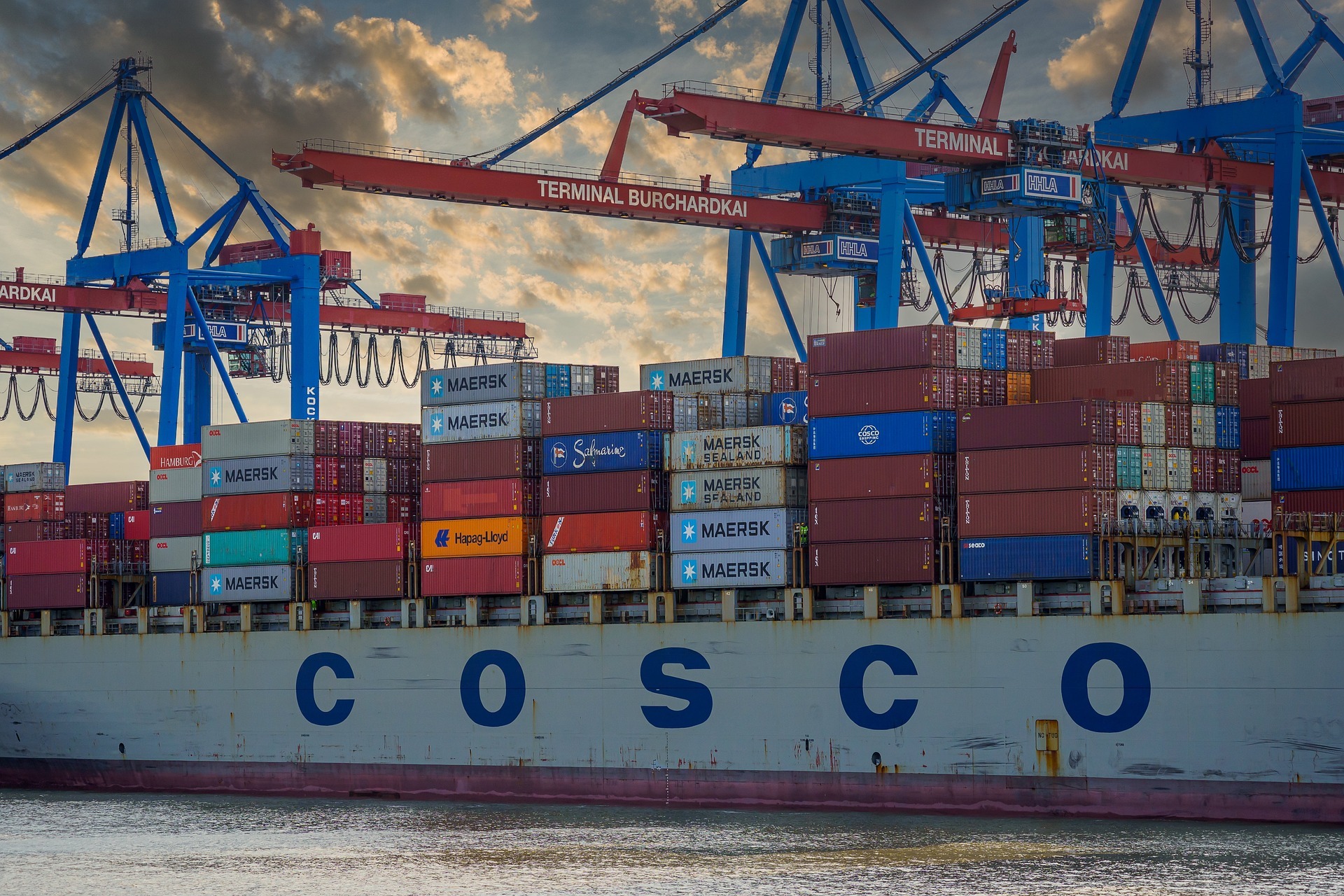
Optimising Your Supply Chain: Lessons from Tetris3PL
Effective supply chain management is the backbone of any successful business. At Tetris3PL.com, we specialize in providing innovative solutions to optimize your supply chain, from warehouse logistics to global supply chain strategies. This article outlines our unique approach to supply chain management, the role of technology in driving efficiency, and lessons businesses can apply to their operations. By addressing critical vulnerabilities and leveraging certifications, we’ll demonstrate how to transform supply chains into resilient and agile systems.
What is Supply Chain Management?
Supply chain management involves coordinating the flow of goods, information, and finances across various stages—from raw materials to the final product delivered to customers. The supply chain definition includes procurement, manufacturing, inventory management, logistics, and distribution. For businesses operating in the global supply chain landscape, ensuring seamless integration of these elements is critical.
At Tetris3PL.com, our services are designed to align the shipping part of your supply chain. Our advanced technology solutions, strategically located warehouses, and robust logistics services ensure your supply chain is optimized for both efficiency and customer satisfaction.
Unique Approach
1. Technology Integration
We utilise a cutting-edge warehouse management systems (WMS) that integrate with major e-commerce platforms like Shopify, Walmart, Etsy, Amazon and many more.
This integration streamlines order processing, provides real-time inventory updates, and ensures accurate sales data synchronization. By leveraging the use of technology to improve supply chain operations, we enhance efficiency and reduce errors.
2. Strategic Locations
Our fulfillment centers in Las Vegas, Nevada, and Orlando, Florida, are strategically positioned to minimize shipping times and costs. This geographical advantage enables efficient management for supply chain operations and ensures timely delivery to customers.
3. Comprehensive Logistics Services
From Less Than Truckload (LTL) to Full Truckload (FTL) shipping, Tetris3PL.com offers tailored logistics solutions. Our focus on flexibility and reliability allows businesses to address critical vulnerabilities in their supply chains, such as fluctuating demand and supply disruptions.
Addressing Critical Vulnerabilities in Your Supply Chain
The global supply chain is rife with challenges, from geopolitical instability to natural disasters. Identifying and mitigating vulnerabilities is essential to maintaining operational resilience. Common issues include:
– Lack of Visibility: Without real-time tracking, businesses struggle to monitor shipments and inventory.
– Overdependence on Single Suppliers: Relying on one supplier increases risk during disruptions.
– Inefficient Communication: Poor communication between supply chain departments leads to delays and errors.

Leveraging Technology to Improve Supply Chain Performance
Advanced technologies are transforming supply chain logistics. At Tetris3PL.com, we employ:
– Blockchain: Ensures transparency and traceability in the supply chain.
– Internet of Things (IoT): IoT devices provide real-time data on inventory and shipments.
The Import

Benefits of Supply Chain Certifications:
– Enhanced efficiency
– Improved problem-solving
– Increased job satisfaction
– Cost savings

Conclusion
We combine technology, strategic planning, and expert logistics to optimize supply chains. Whether you’re navigating the complexities of the supply chain or seeking to improve supply chain logistics across multiple channels, our solutions address critical vulnerabilities and enhance performance.
Investing in supply chain optimization isn’t just a necessity; it’s a strategic advantage. With the lessons outlined above, businesses can achieve resilient, efficient, and customer-centric supply chain operations. Let us be your partner in building the supply chain of tomorrow.

How Fulfillment Companies Optimize the Efficiency of Shipping and Warehousing Services
Efficient logistics can make or break a company’s success in the fast-paced business world, particularly in the e-commerce sector. As customers demand faster and more reliable deliveries, businesses must ensure that their warehousing, shipping, and fulfillment operations are optimized to meet these expectations. This is where fulfillment companies step in. These companies are dedicated to streamlining the logistics process, offering specialized warehousing and shipping services that meet and often exceed customer expectations.
What Is a Product Fulfillment Company?
A product fulfillment company specializes in handling the logistics of order fulfillment, including inventory storage, order processing, packaging, and shipping. Essentially, they take over the supply chain from where a customer places an order, ensuring the product is picked, packed, and delivered efficiently. They also manage inventory storage, keeping track of stock levels and organizing warehouses to ensure that products are stored safely and can be accessed quickly when an order is placed.
This end-to-end logistics handling is critical for businesses, mainly e-commerce, where fulfillment company shipping plays a crucial role in meeting customer expectations for fast and reliable deliveries. A fulfillment center service allows businesses to store their products in a warehouse managed by the fulfillment company, which ensures that products are ready to be dispatched as soon as an order is placed.
The Role of Fulfillment Companies in Warehousing
Efficient warehousing is at the heart of any successful logistics operation. For businesses that handle physical products, warehousing represents one of the most significant operational challenges. Inventory must be stored to maximize space while ensuring products are easily accessible when needed. Furthermore, maintaining accurate stock levels is crucial for preventing overselling and managing supply chain interruptions.
Fulfillment companies provide specialized warehousing and shipping services that help businesses overcome these challenges.
To further enhance logistics efficiency and elevate the customer experience, businesses can leverage custom shipping boxes by Arka. These tailored packaging solutions provide more than just protection for products during transit—they also contribute to brand recognition and customer satisfaction. Custom shipping boxes ensure that goods arrive in pristine condition while offering an opportunity to create a memorable unboxing experience. By incorporating high-quality custom packaging into their fulfillment strategies, companies can optimize shipping operations, reduce waste, and align with sustainability goals, all while making a lasting impression on their customers.
These companies typically operate large, well-organized warehouses that can store products for multiple clients.
- Last-mile delivery Innovations are transforming the delivery workforce. Drivers may need to adapt to emerging technologies and methods, acquiring new skills like operating drones, maintaining delivery robots, or managing deliveries to intelligent lockers. A well-known company in the robotics delivery and space technology used robots which traveled 11 million miles through neighborhoods and campuses in the U.S. and Europe, completing 6 million deliveries. The company recently secured additional funding to expand its reach. Meanwhile, one well known nationwide superstore partners with drone providers for nationwide deliveries is increasing its Dallas-Fort Worth service area to include 1.8 million more households, soon covering three-quarters of the region’s population.
- Using augmented reality to find skilled employees. It is becoming increasingly difficult to find both skilled and unskilled workers if current labor trends persist. In response to this labor shortage, fulfillment centers are adopting augmented reality technology to enhance their existing workforce’s speed, skills, and efficiency. And carriers are now using wearable AI devices, such as smart glasses, to assist shop floor pickers in determining optimal item placement in carts.
- Data technology & artificial intelligence adoption. Data became a key focus in 2019, with advancements in data technology enabling fulfillment centers to collect valuable insights and apply them to decision-making processes throughout the supply chain. Fulfillment centers leverage advanced analytics platforms, logic-based systems, and electronic data interchange (EDI) to optimize operations. The role of data has even extended to integrating artificial intelligence into the order fulfillment process. AI-powered warehouse robotics enhance pick/pack efficiency by selecting optimal picking routes and eliminating unnecessary travel through the warehouse. As trends suggest, advancements in fulfillment technology for order processing will continue to push the limits of speed and efficiency, driving improvements in order fulfillment for years to come.
Conclusion
In today’s competitive business environment, efficiency is key to success. By outsourcing warehousing and shipping services to a product fulfillment company, businesses can streamline logistics operations, reduce costs, and improve customer satisfaction. Fulfillment warehouse shipping services offer the flexibility, scalability, and technological expertise to meet the growing demands of e-commerce and other industries.
As businesses grow, the need for efficient and reliable fulfillment solutions will only increase. By partnering with a fulfillment company, businesses can stay ahead of the curve, ensuring they can meet customer demands and maximize their profitability. Fulfillment services enhance the customer experience and free up valuable time and resources, allowing businesses to focus on what they do best—growing their brand and delivering exceptional products.
